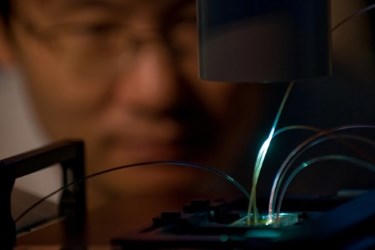Rapid Diagnostics Developed For Bloodstream Infection
By Chuck Seegert, Ph.D.

A new test method has shown unprecedented sensitivity and accuracy for the diagnosis of infections in the bloodstream. With analysis on the single-cell level, the method promises to increase early detection of sepsis before it accelerates and becomes deadly.
Systemic infections in the bloodstream can lead to a rapidly accelerating condition called sepsis. The disease affects millions of people in the United States alone and, with the increasing prevalence of antibiotic-resistant pathogens, it is only getting worse. Blood infections are often monitored by culturing for bacteria, a time-consuming diagnostic approach that could take hours. During that time, a patient’s health may significantly decline. More recent approaches using real-time polymerase chain reaction are better, but can still take many hours.
To reduce this limitation on existing methods, a team from the University of California at Irvine (UCI) has developed another approach, according to a recent UCI press release. The new technology is called Integrated Comprehensive Droplet Digital Detection (IC 3D), and it can perform analysis in as little as 90 minutes.
“We are extremely excited about this technology because it addresses a long-standing unmet medical need in the field,” said Weian Zhao, assistant professor of pharmaceutical sciences and leader of the UCI team, in the press release. “As a platform technology, it may have many applications in detecting extremely low-abundance biomarkers in other areas, such as cancers, HIV and, most notably, Ebola.”
The new IC 3D approach is an amplification- and culture-free process capable of directly detecting bacteria on a single-cell level, according to a recent study published by the team in Nature Communications. Using Escherichia coli as a model system, the team demonstrated that IC 3D could detect the bacteria in concentrations ranging from 1 to 10,000 bacteria per milliliter.
Using real-time detection with DNAzyme-based sensors, the blood sample is converted into billions of small droplets and mixed with a fluorescent DNA marker, according to the press release. Breaking the sample into many small drops enables the detection of bacteria with high accuracy — all while eliminating noise and the need for purification — which are limitations to other techniques.
Velox Biosystems is a UCI spinoff that is working to develop the system further and prepare it for commercialization, according to the press release.
In addition to diagnosing bloodstream infections, treatment methods have experienced an increased focus. Recently, an investigative blood filtration device was used to treat a patient stricken by Ebola.
Image Credit: Steve Zylius / UCI
